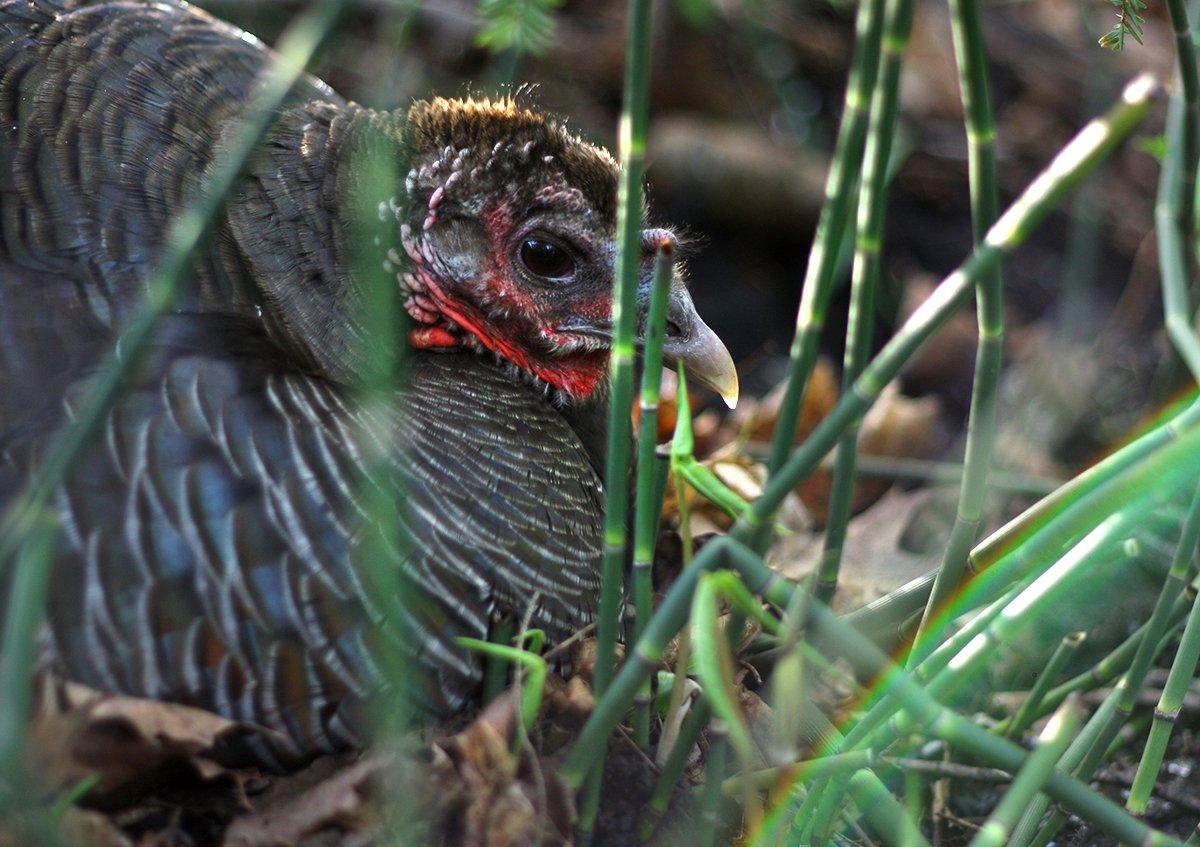And What You Don't Know . . .
This feature article first appeared back in 2001 as All About the Wild Turkey, a chapter in the Team Realtree Turkey Hunting Fieldbook. Written by the late Aaron Pass, and as the title suggests, excerpts from the article follow, and offer some facts on America's greatest gamebird you may not know.
- Steve Hickoff, Realtree.com
The American wild turkey is a large gallinaceous (roughly means "land-loving") bird belonging to the order of Galliformes.
These birds walk as much or more than they fly.
The order also includes pheasants, grouse, quail and even chickens.
However, the turkey is a rather distant cousin of the others.
While the other gallinaceous birds either originated elsewhere or were widely distributed, the turkey is a unique creature of the New World.
Ancient History
Spanish conquistadores found the turkey already domesticated by the Indians of Mexico and the American Southwest. In the early 1500s, they shipped turkeys back to Europe. It was a time when various types of exotic poultry were arriving from the Middle East, and under the mistaken assumption that this big, bronze bird had a similar origin, they were mistakenly dubbed "Turkey birds."
Farther north on the North American continent, the Indians were less inclined to poultry domestication but shared our own modern enjoyment of hunting turkeys. Wild turkeys were an important game and food species. Archaeologists have found evidence of turkey feasts at Indian sites dating back to 3000 B.C.
In addition, wild turkey feathers were used as decorations and were even woven into fabric and ropes. Turkey bones were used for tools such as awls, and joined turkey wingbones, virtually identical to the "wingbone" type calls we use today, have been found at several archaeological sites.
Colonial Turkeys
The wild turkey also figured prominently in furnishing food and sport for pioneers. Early diaries and journals describe "prodigous multitudes of turkeys which go in troops sometimes to the number of 200."
John Lawson, the 18th-century Carolina explorer and land speculator, and his party, shot and ate wild turkeys so often they became "cloy'd with turkey" and were pleased to dine on "possum" instead.
Another group, the Lewis and Clark expedition, found turkey had a "most disagreeable flavor." It's likely that they bagged and boiled a turkey vulture in error.
Wild Turkey Vision
Good eyesight is the wild turkey's principal defense and survival tool. Wild turkeys can see about as well as a hawk, or roughly equivalent to a human using 8X binoculars.
Like all birds, turkey have excellent color vision and depth perception. This means turkeys don't have to shift their focus to see objects clearly at different distances. Everything within a scope of a turkey's view is always in focus, and that scope of view is enormous.
A turkey can see in a nearly 300-degree arc without turning its head. That means it can see all but what is directly behind its head.
Breeding
Toms gobble, strut and posture both to attract hens and define their place in the gobbler hierachy.
The hens normally come to the gobbler for breeding, but the gobbler sometimes goes to a hen he hears calling.
The whole sport of spring turkey hunting revolves around this interaction.
Nesting
The wild turkey hen makes her nest on the ground in a secluded place and lays 12 to 14 mottled eggs.
When she "takes the nest," she will incubate for 28 days until the poults hatch.
For the first six weeks of life, the poults require a high-protein diet. This is why hens prefer to nest near meadows and pastures where insects are plentiful.
With the hens hanging around pastures, gobblers are going to be there too.
As the hens take the nest and become unavailable, gobblers may be more easily called.
Go here for more Realtree turkey hunting articles.
Follow Realtree on Facebook.










